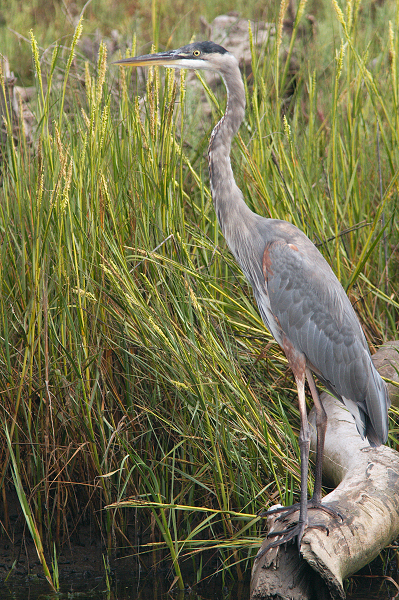
Date: 2005-08-06
Lens: Canon 300mm IS F4 + 1.4x II Converter

 Great Blue Heron
Ardea herodias
Great Blue Heron
Ardea herodias
 Description
DescriptionThese graceful birds can usually be seen fishing in shallow water or along the waters edge. Although approximately 75 percent of their diet is fish, they also eat small rodents, amphibians, reptiles, insects, crustaceans, and occasionally small birds. When fishing they stand still, peering motionless at the water, waiting for their prey to come closer. Herons have a distinctive "S" shaped neck. And they fly with their neck folded back, not stretched out. Unfortunately, like other herons and egrets, this bird's habitat is rapidly decreasing in California.
A large, bluish-grey bird. Has a black patch on a white crown and face. Black shoulders. Yellow eyes and long pointed bill. Large 6' wing span. Sexes similiar. 39 to 52 inches in length.
Lakes, ponds, rivers, and marshes.
 Nesting
Nesting3-7 pale green-blue eggs with a 28 day incubation period. Fledging occurs 56-60 days after hatching. The nest is usually placed high up in a tall tree and consists of a platform of sticks lined with softer material. Great Blue Herons are monogamous and nest in colonies.